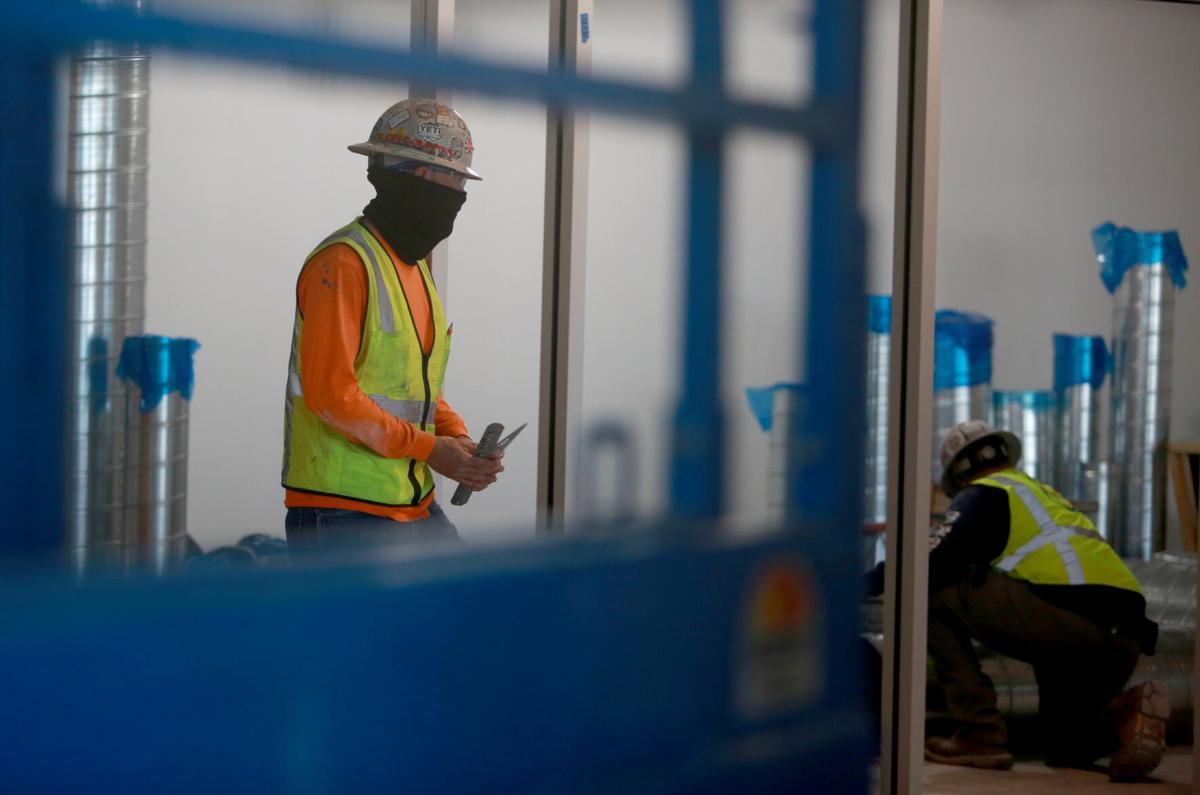Arizona’s jobs recovery “hit the pause button” in the third quarter as the COVID-19 virus resurged, and the future pace of the recovery depends largely on vaccinations keeping the pandemic at bay, University of Arizona economists say.
And the Tucson area lags the entire state with just 78% of jobs lost during the pandemic recovered through October, according to the latest economic outlook issued Friday by the UA’s Economic and Business Research Center in the Eller College of Management.
Meanwhile, current high inflation driven by the pandemic is not expected to ease until mid-2022, a prominent guest economist said during an online outlook event.
Though Arizona’s economic recovery is expected to continue, the pace of that recovery remains uncertain as new COVID-19 variants emerge, said UA economist George Hammond, director of the UA economic research center.
If the vaccines remain effective against COVID-19, the forecast calls for Arizona job and population growth to gain momentum in the near term, but income growth and retail sales are expected to soften as federal income support dissipates and households draw down savings.
This year, Arizona nonfarm employment is expected to rise 3.7% while increasing 2.6% in Tucson and 3.3% in the Phoenix area, the UA economists found.
“Downside risks outweigh upside risks at this time, as the course of the pandemic continues to generate surprises and as supply-chain disruptions remain a concern,” Hammond said in his presentation.
Former Chase Chief Economist Anthony Chan said the current high price inflation will likely continue before easing next year.
“The inflation pressures we have here are not permanent, they’re not going to last forever, but they are going to last a lot longer than the Federal Reserve anticipated,” Chan said.
Inflation is being driven by supply-chain disruptions, labor shortages and high energy prices, he said.
“Until you unwind those things, you’re not going to see inflation coming down,” Chan said. “But the good news is, I think in 2022 perhaps by the second half of the year, we will start to see some light at the end of the tunnel.”
Job gains
Through October, Arizona had recovered 98% of the estimated 331,500 jobs lost at the outset of the pandemic from February through April 2020, the UA economists found.
The Phoenix area recovered about 106%, and the Sierra Vista-Douglas area recovered the most with 130.4%, followed by Prescott (122%), Yuma (117.5%) and Lake Havasu City-Kingman (116.4%).
Only Tucson and Flagstaff failed to fully recover jobs lost during the first few months of the pandemic, with Flagstaff recovering about 85% and Tucson 77.5%, the UA economists found.
Hammond said both Tucson and Flagstaff have a high concentration of leisure and hospitality jobs, which have been slow to recover.
“Tucson may also reflect the relatively large share of residents age 65+, who are most vulnerable to the COVID-19 virus,” Hammond said in an email. “That may mean that Tucson residents are a bit more reluctant to return to all of the travel and tourism activities that we enjoyed before the pandemic began.”
Uncertain outlook
On an annual average basis, Tucson is still expected to gain jobs in 2021, though at a slower rate than the rest of the state.
The Eller economists forecast that nonfarm employment in the Tucson metro area will grow 2.6% in 2021 and rise the same percentage each year in 2022 and 2023 before the annual growth rate tails off to 1.6% in 2024.
In contrast, the UA economists expect Arizona’s statewide employment to increase 3.7% this year and 4.3% in 2022, while the Phoenix metro area will see increases of 3.3% for 2021 and 3.7% in 2022.
The UA economists forecast that population gains — and homebuilding — will accelerate through 2022, as Arizona attracts remote workers from high-cost western metropolitan areas, before gradually slowing.
The huge amount of federal income support that drove income gains in 2020 and 2021 will dissipate in 2022, slowing gains in retail sales, the UA economists said.
Changing jobs
The UA report clearly shows the pandemic-driven shift of jobs away from sectors like leisure and hospitality that have been hit hard by COVID-19 restrictions, to industries like transportation that support the new pandemic normal of online ordering.
Statewide from February 2020 through October, Arizona lost 19,600 government jobs and 18,100 leisure and hospitality jobs, while gaining 36,800 jobs in trade, transportation and utilities, including 25,600 transportation and warehousing jobs.
Professional and business services, education and health services, manufacturing and financial activities were modestly above their pre-pandemic peak.
The number of construction jobs dipped slightly, while natural resources and mining jobs were equal to their pre-pandemic level, the UA economists found.
Arizona personal income declined by 26.5% in the second quarter, faster than the national drop of 21.8%, reflecting reduced federal economic-impact payments and unemployment benefits.
For Arizonans able to work, net earnings from work rose 8.4% in the second quarter, but that was below the national average gain of 10.7%.





